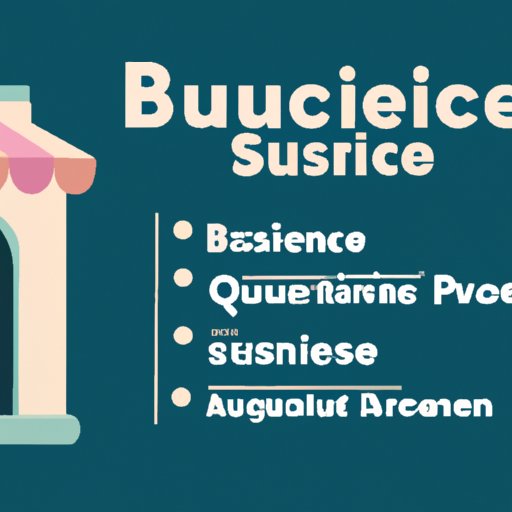Introduction
Starting a boutique business is an exciting venture that can be both profitable and rewarding. But it’s also a lot of work, and there are a number of steps and considerations you should take before launching your business. This guide will help you understand what a boutique business is, why you should start one, and how to get started.
What is a Boutique Business?
A boutique business is a specialized retail store that offers unique and high-end products and services. Boutiques typically focus on specific types of products, such as clothing, jewelry, home decor, or beauty products. They also offer personalized shopping experiences, often with knowledgeable staff members who can provide customers with advice and assistance. As a result, boutiques tend to have loyal and repeat customers.
Why Start a Boutique?
The retail industry is booming, and according to a study by Statista, global retail sales are expected to reach over $28 trillion by 2021. Starting a boutique business is a great way to capitalize on this growth, but there are other advantages to consider as well. Boutiques often require less overhead than larger retailers, and they offer more flexibility in terms of product selection and pricing. Plus, they can be tailored to meet the needs of local shoppers, giving them an edge over online stores.
Outline the Steps for Starting a Boutique Business
Once you’ve decided to start a boutique business, the next step is to outline the steps you need to take to get your business off the ground. Here are the key steps you should consider when starting a boutique business:
Research the Competition
Before you open your doors, make sure you know who your competitors are and what they offer. Research their prices, product selection, customer service policies, and other factors that could impact your business. Knowing what your competitors are up to will help you create a competitive advantage and stand out from the crowd.
Select an Ideal Location
Location is key when it comes to starting a boutique. Look for a spot that’s close to your target customers and has plenty of foot traffic. Analyze the competition in the area and make sure your location is convenient and accessible.

Obtain Necessary Permits and Licenses
You’ll also need to obtain the necessary permits and licenses to operate your business. Depending on your state and local laws, this may include a business license, sales tax permit, and any other permits required to sell your products.
Source Products and Services
Next, you’ll need to source products and services for your boutique. Find reliable suppliers who offer quality items at competitive prices. You may also want to consider offering custom products or services to set yourself apart from other boutiques.
Develop a Business Plan
Creating a business plan is essential for any new business. Your business plan should include research, financial projections, and a marketing strategy. It should also outline your goals and objectives and provide guidance on how to achieve them.
Identify Your Target Audience and Product Offerings
Before you open your boutique, you’ll need to identify your target audience and determine what products and services you’ll offer. Think about who your customers are and what type of items they’re looking for. You may also want to consider offering special discounts or loyalty programs to encourage repeat customers.

Design a Business Plan for Your Boutique
Once you’ve identified your target audience and product offerings, you’ll need to create a business plan for your boutique. This should include information about your budget, sources of funding, pricing strategies, and marketing plans. Make sure to include details about any loans or investments you’re seeking, as well as your projected profits and losses.

Develop a Brand Identity for Your Boutique
Your boutique’s brand identity will be key to its success. Develop a mission statement that reflects your values and the goals of your business. Also, create an image and feel for your store that will draw customers in and keep them coming back. Consider the look and feel of your store, as well as ways to differentiate yourself from other boutiques.
Choose the Right Location for Your Boutique
When selecting a location for your boutique, consider the local demographics and analyze the foot traffic in the area. Assess the competition and make sure your location is convenient and accessible. Also, think about whether you’ll need additional space for storage or staff.

Market Your Boutique to Build Awareness
Once you’ve opened your boutique, you’ll need to market it to build awareness. Utilize social media to promote your business and engage with customers. Participate in local events and leverage influencers to reach new audiences. You may also want to consider offering discounts or special promotions to draw customers in.
Conclusion
Starting a boutique business can be a rewarding and profitable venture, but it requires a lot of planning and preparation. By following the steps outlined in this guide, you’ll be well on your way to launching a successful boutique. From researching the competition to choosing the right location and developing a brand identity, you’ll have all the tools you need to get started. Thank you for taking the time to read this guide, and we wish you luck on your journey to becoming a boutique entrepreneur!
(Note: Is this article not meeting your expectations? Do you have knowledge or insights to share? Unlock new opportunities and expand your reach by joining our authors team. Click Registration to join us and share your expertise with our readers.)
